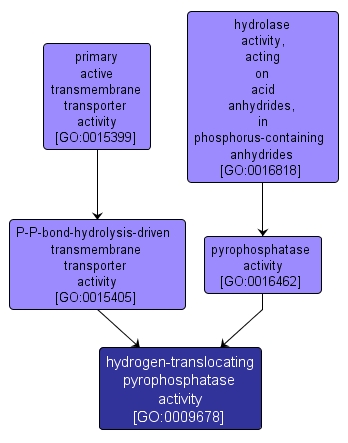GO TERM SUMMARY
|
| Name: |
hydrogen-translocating pyrophosphatase activity |
| Acc: |
GO:0009678 |
| Aspect: |
Molecular Function |
| Desc: |
Catalysis of the hydrolysis of pyrophosphate, which generates a proton motive force. |
Synonyms:
- proton-translocating pyrophosphatase activity
|
|

|
INTERACTIVE GO GRAPH
|














